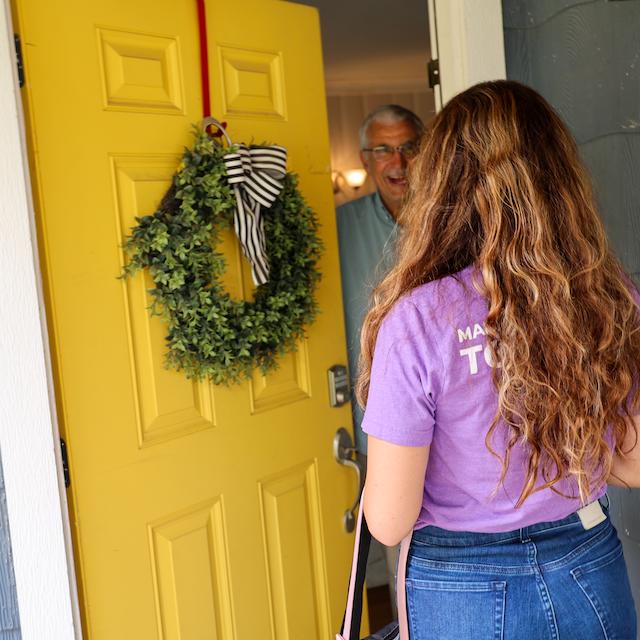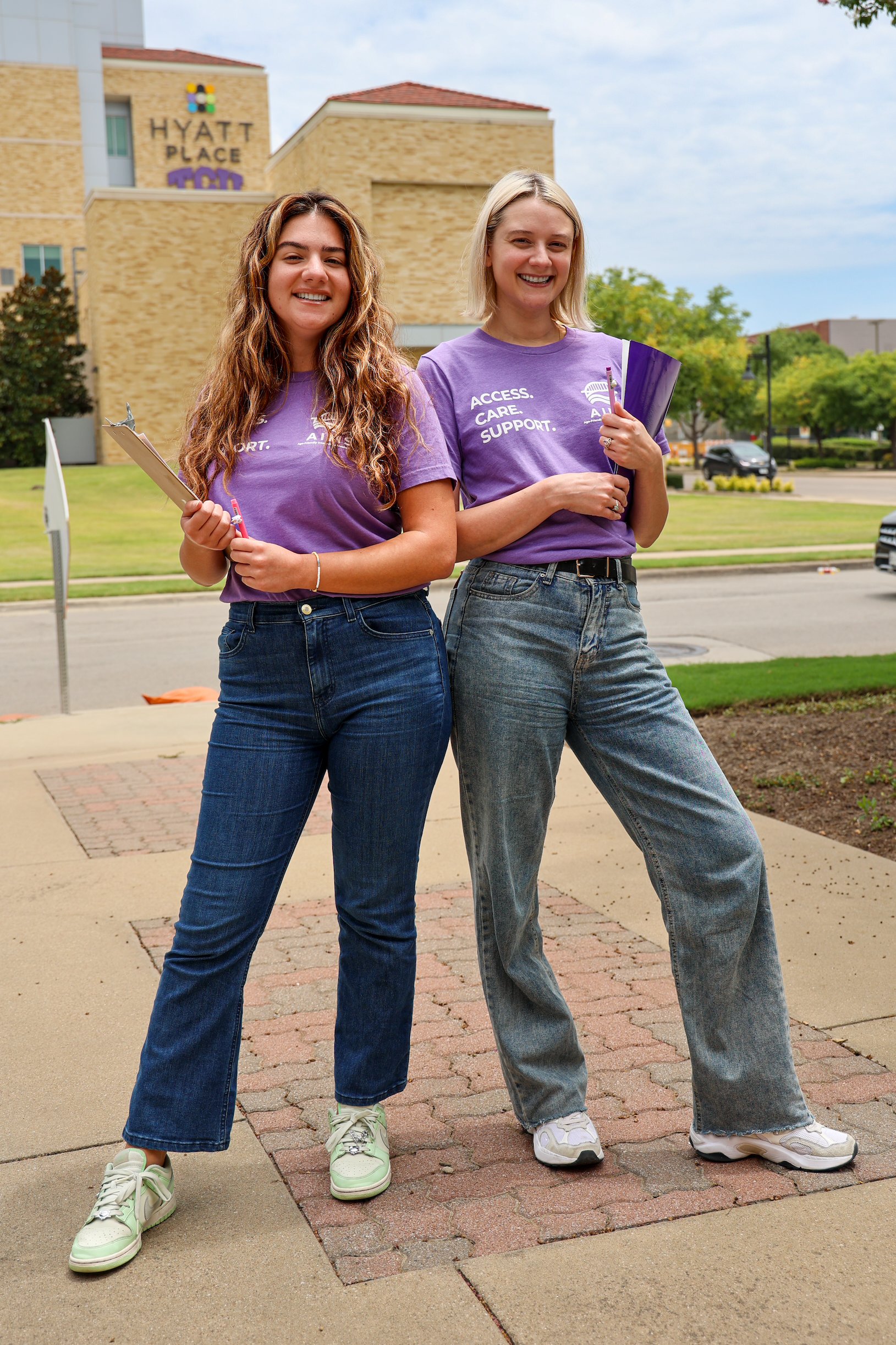
‘Still Here, Still Living’: AIMS Project Gives Voice to Tarrant County Older Adults
At first glance, the participants in the AIMS study seem like anyone’s elderly neighbor:
a woman on oxygen who still smokes a pack a day, a veteran who believes “pain means
you’re alive,” a rock-painting volunteer who also runs social media for a local mission store.
But running through each story is a powerful thread, a quiet resilience that underscores
why this research project on better aging exists.
Adaptive Intervention with Multidimensional Support (AIMS) for Older Adults is a pilot
study led jointly by the Institute of Behavioral Research (IBR) and TCU’s Harris College
of Nursing & Health Sciences, with support from multiple community partners. The study is led by
TCU’s Gina Alexander, Kim Posey, Amanda Sease and Kevin Knight. The goal is to help adults ages
65 and older in Tarrant County remain independent in their homes.
But it’s not just about medical assessments and referrals.
“AIMS is a whole-person type of approach,” said Sease, an associate research scientist
at IBR.
The study combines efforts from nurses, pharmacists, research assistants and a mobile
health unit, all coordinated to assess participants’ needs through the 4Ms framework of an
age-friendly health system: mentation, mobility, medication and what matters most. Participants are recruited through Meals on Wheels and an ambulatory care clinic where Posey, coordinator
of the executive nurse in leadership and practice DNP program and associate professor
of professional practice, provides care as a nurse practitioner.
But beyond the logistics lies the heart of the story: the people. And that’s where
Francesca Gentea, the study’s boots-on-the-ground site visitor, shines.
“Honestly, a lot of them just want to talk,” Gentea, public health research associate,
said. “Some don’t see anyone regularly unless they go to the grocery store. Even a
conversation with a cashier feels meaningful.”
She recounts visiting a woman who lives alone, tethered to an oxygen tank. Her house,
filled with the memory of her son who died upstairs, has become both sanctuary and
barrier.

“She still smokes, even though she’s on oxygen, and hasn’t been upstairs since he
passed. She washes her hair in the sink because the shower is up there. But her biggest concern?
Just wanting to get outside and talk to people.”
Another participant, in her 80s, lights up when she talks about volunteering at a
local mission store, where she’s taken charge of its social media presence.
“She’s learning to make Instagram reels,” Gentea said with a laugh. “She asked me
if I knew any songs that didn’t have bad words because it’s a church group.”
Not every visit is cheerful. Some participants politely decline help, stating they’ve
got it handled. Others are deeply isolated. One woman, managing chronic pain after
seven back surgeries, shared her experience of being judged for needing opioid medication.
“She told me, ‘People think I’m a drug addict. But I’ve been in pain for decades.
These meds are what keep me functional.’”
That tension — between medical judgment and lived experience — is something Sease hopes to explore further in the project’s future. “There’s often a disconnect between
what professionals think participants need and how the participants themselves see it,”
she explained.
“Many don’t feel motivated to follow up on referrals because they don’t see their
situation as needing intervention. So we want to test ways to improve that follow-through by really
listening first.”
Gentea has noticed a change over time. Participants who were once wary began looking forward to visits.
“They’d clear their schedule and wait by the door,” Gentea said. “Some even said,
‘I cleaned the table for you,’ like they were having guests over.”
Sometimes, the outreach went beyond the participants.
“One woman got a gift card from us and gave it to her friend instead. She said she
was doing fine,” Gentea said. “That sense of community support, even from those with
so little — it stays with you.”
The pilot has revealed not just unmet needs but also the mental strength and adaptability
of a population often overlooked. Gentea recalled two formerly homeless participants: one thriving in a new apartment, rebuilding life with optimism; the other struggling to
organize his space, seemingly stuck despite the same starting point. One of them, she said, was
a veteran who had experienced deep personal loss but still kept moving forward, telling her,
“Pain means you’re alive.”
“It was eye-opening and humbling,” Gentea said. “They were in the same boat but ended up in totally different places.”
And then there are the parting moments.
“When the study ends, some ask if they’ll ever see us again,” Gentea said. “That’s
the hardest part. You build this connection, and then it’s just … done.”
Still, many of the participants carry a deep sense of optimism.
“They’ll say things like, ‘I’ve lived my life, but I’ve still got a decade left,’”
Gentea said. “It’s a powerful reminder that even with limited resources or tough histories,
so many older adults are still actively trying to live, connect and contribute.”
In a country where aging often becomes synonymous with invisibility, AIMS offers a
different view: one where older adults are seen, heard and treated as people still very much
living.
